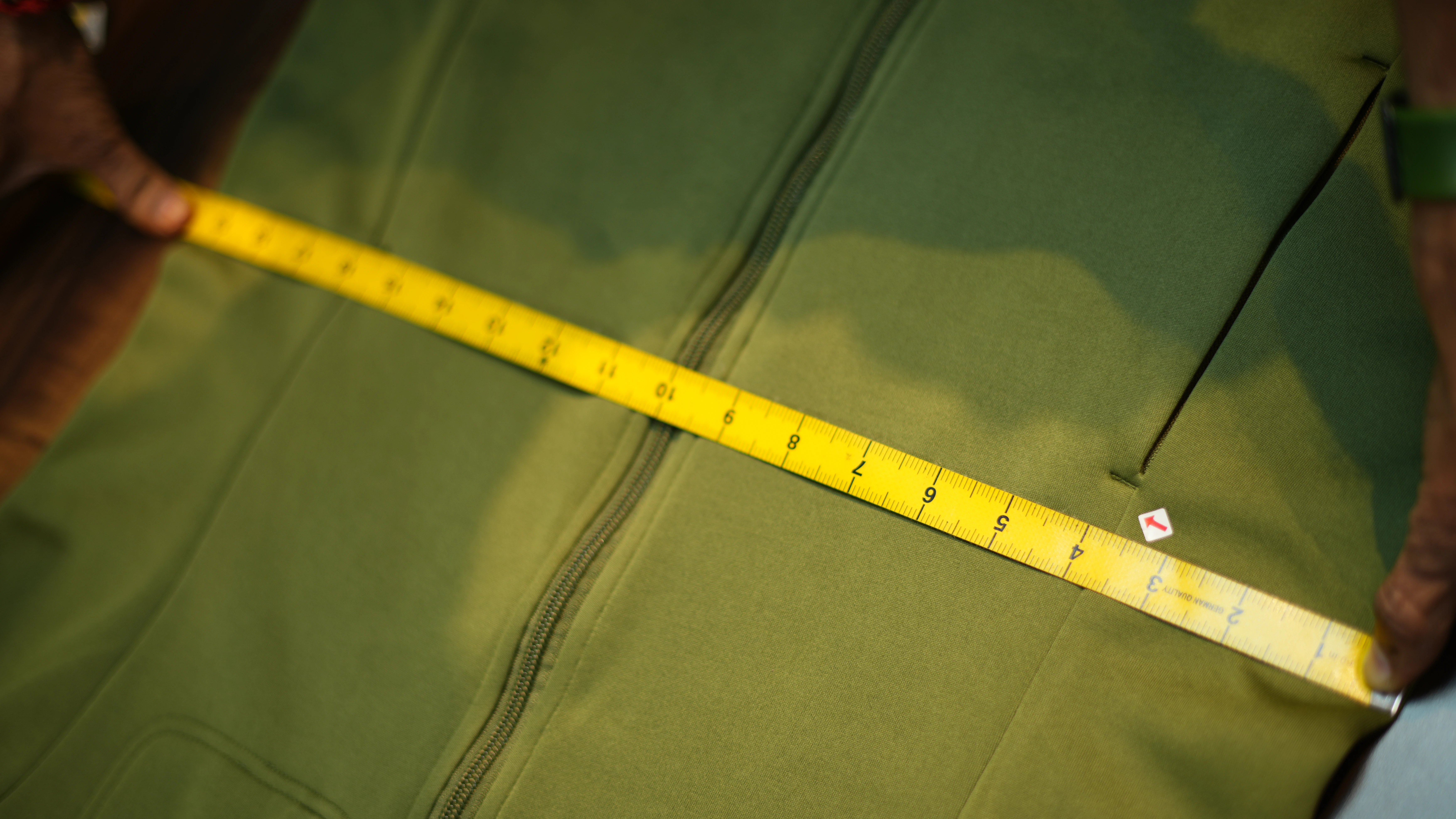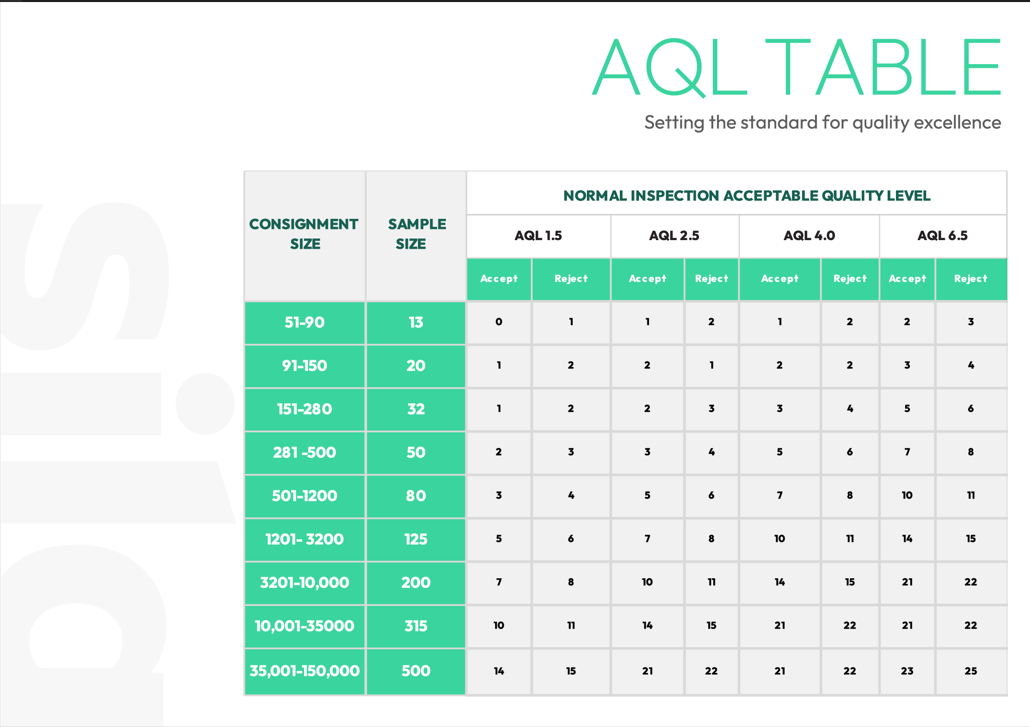Apparel AQL Inspection Guide for Importers

How many defective items in a shipment are too many?
If you're importing high-end apparel, even a few missed stitches, poor zipper alignment, or fabric mismatches can derail your entire supply chain. That's where apparel AQL inspections come in, giving importers the confidence that product quality isn't left to chance.
Whether you're sourcing from factories in India, Vietnam, or China, understanding how to leverage Acceptable Quality Level (AQL) standards during inspections is a must. It ensures your garments meet brand expectations, prevent rework, and avoid delays. This guide is written for sourcing and logistics professionals who need clarity on what to look for in every batch, based on years of quality control experience in the garment industry.
What is AQL in Apparel Inspections?
AQL stands for Acceptable Quality Level, a statistical measure used to determine how many defective items are permissible in a production batch. AQL standards are built on random sampling methods that strike a balance between checking every item (which is expensive and time-consuming) and checking too few (which is risky).
In the garment manufacturing space, AQL is a gold standard for quality control. It allows brands to confidently evaluate batches without inspecting every single unit, preserving overall quality while maintaining inspection efficiency.

You can find these thresholds detailed in an AQL table, where the sample size and maximum number of defects acceptable are determined by the lot size and AQL level (such as AQL 2.5).
Read More: AQL 2.5 Explained: What It Means for Your Quality Control Process
Why Importers Can’t Ignore AQL Standards
The apparel industry is facing higher expectations than ever when it comes to product quality.
As an importer, using a clear AQL sampling plan during the inspection process gives you:
- A consistent way to hold suppliers accountable to defined quality standards
- Data-driven visibility into quality trends
- Protection against subpar lots entering your supply chain
This is especially important if you're shipping to strict markets like the U.S., EU, or Japan, where consumer protection laws demand transparency in quality assurance.
How AQL Works: Sampling, Levels & Inspection Types
The Sampling Method
AQL inspections use random sampling to choose garments for quality checks. The number of items checked is based on your total lot size, your chosen inspection level, and the AQL value you select.
Refer to an AQL chart or use an AQL calculator to determine:
- Sample size (e.g., check 125 units out of 1,200)
- Acceptable number of defects (e.g., up to 7 major defects)
- Reject number (if defects exceed this, the batch fails)
This sampling inspection method helps manage inspection resources while ensuring garment quality is safeguarded.
AQL Levels in the Garment Industry
The AQL level you choose depends on your tolerance for risk:
- AQL 1.0-1.5: Very strict, common for luxury or medical-grade textiles
- AQL 2.5: Industry standard for apparel
- AQL 4.0 or higher: More lenient, often used for low-cost items
Most importers dealing with high-quality fashion choose AQL 2.5 to balance risk and cost.
Types of Inspections
- Factory Audit: Conducted before production begins to assess the factory’s capabilities, compliance, and quality management systems.
- Pre-Production Sample Inspection: Verifies that samples meet specifications before mass production starts, minimizing the risk of large-scale defects.
- Inline inspection (During Production Inspection - DUPRO): Conducted during production to catch defects early
- Final inspection (Pre Shipment Inspection): Last quality checkpoint before garments leave the factory
The AQL Inspection Checklist for Apparel Importers
This checklist is designed to help importers assess whether the product inspection process has been carried out thoroughly and aligns with their brand standards. It serves as a tool to validate the quality control measures reported by inspection teams or suppliers.
Quantity & Packaging Accuracy
- Does the shipment match the PO quantity?
- Is the packing material as specified?
- Are the cartons correctly labeled and sealed?
Product Quality & Specification Compliance
- Are the fabric type, color, and GSM correct?
- Do product dimensions match the approved size chart?
- Are trims (buttons, zippers, tags) securely attached?
Visual and Functional Inspection
- Are there any major defects like broken zippers or missing stitches?
- Any minor defects, such as loose threads or slight shade variation?
- Do garments function as expected (e.g., zippers glide, buttons close properly)?
Workmanship & Finishing
- Seam alignment and stitch density consistent?
- Clean finishing without overlock exposure?
- No fabric puckering, stains, or odor?
Labeling & Regulatory Compliance
- Correct fiber content, size, and care labels?
- Country of origin clearly displayed?
- Any ISO or market-specific labeling requirements followed?
Identifying Defects: Critical, Major, and Minor
Understanding types of defects is key to applying AQL standards and protecting your brand's acceptable level of quality:
- Critical defects: Unsafe or illegal (e.g., needle left in garment)
- Major defects: Affect functionality or customer acceptance (e.g., broken zipper)
- Minor defects: Slight imperfections not affecting use (e.g., small loose thread)
Each defect category has a defined acceptable number based on the AQL level and sample size, helping you manage your supplier's level of defects.
Read More: 5 Factory Inspection Mistakes & Best Practices for Quality Control
When to Reject a Shipment?
Use your AQL sampling results to make pass/fail decisions. If the number of defects exceeds the threshold listed in your sampling inspection plan, the lot is rejected. Importers can then:
- Request rework at the factory
- Negotiate discounts
- Block shipment entirely
Tracking failed batches over time also supports better quality management, improving overall quality in future production cycles and reducing instances of defective products.
Best Practices for Importers Using AQL
- Always define AQL standards in the PO.
- Share your inspection checklist with the factory in advance.
- Hire trained, third-party inspectors experienced in garment inspection.
- Use AQL charts and tools to validate reports independently.
- Adjust the inspection level based on the supplier history and risk level.
Need Help with Apparel Quality Inspections?
At Silq, we help premium brands manage quality control across every stage of garment manufacturing: from pre-production to final shipment. Our on-ground teams in India and China ensure your inspections follow the correct AQL standards and reflect what actually arrives at your warehouse.
For most high-quality apparel imports, AQL 2.5 is the industry standard. It offers a balanced approach between quality control and cost-efficiency.
Use an AQL table or an AQL calculator by inputting your lot size and inspection level. These tools will provide your sample size and the maximum number of acceptable defects.
Common major defects include broken zippers, seam slippage, open stitches, and incorrect sizing. These typically lead to customer complaints or product returns.
Not recommended. Adjust your AQL level and inspection level based on your supplier’s past performance and the criticality of the product.
Yes. Inline inspections catch systemic issues early in the production process and reduce the risk of large-scale rework during final inspection.
Ready for Supply Chain Predictability?
Importers using Silq ship smarter, safer, and with total control.






%20(1).png)
